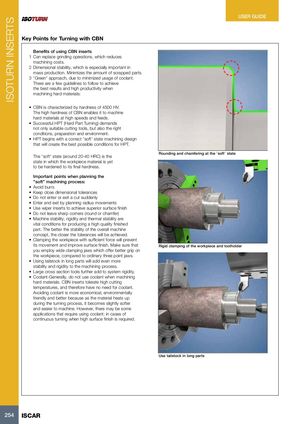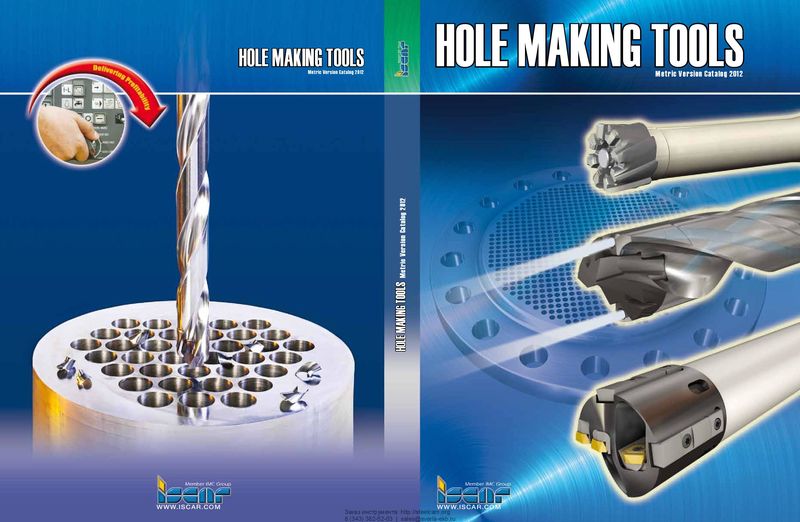Каталог Iscar токарные пластины ISO 2022 - страница 134
Навигация

ISOTURN INSERTS USER GUIDE Key Points for Turning with CBN Benefits of using CBN inserts 1 Can replace grinding operations, which reduces machining costs. 2 Dimensional stability, which is especially important in mass production. Minimizes the amount of scrapped parts. 3 “Green” approach, due to minimized usage of coolant. There are a few guidelines to follow to achieve the best results and high productivity when machining hard materials: • CBN is characterized by hardness of 4500 HV. The high hardness of CBN enables it to machine hard materials at high speeds and feeds. • Successful HPT (Hard Part Turning) demands not only suitable cutting tools, but also the right conditions, preparation and environment. • HPT begins with a correct “soft” state machining design that will create the best possible conditions for HPT. Rounding and chamfering at the ”soft” state The “soft” state (around 20-40 HRC) is the state in which the workpiece material is yet to be hardened to its final hardness. Important points when planning the “soft” machining process: • Avoid burrs • Keep close dimensional tolerances • Do not enter or exit a cut suddenly • Enter and exit by planning radius movements • Use wiper inserts to achieve superior surface finish • Do not leave sharp corners (round or chamfer) • Machine stability, rigidity and thermal stability are vital conditions for producing a high quality finished part. The better the stability of the overall machine concept, the closer the tolerances will be achieved. • Clamping the workpiece with sufficient force will prevent its movement and improve surface finish. Make sure that Rigid clamping of the workpiece and toolholder you employ wide clamping jaws which offer better grip on the workpiece, compared to ordinary three point jaws. • Using tailstock in long parts will add even more stability and rigidity to the machining process. • Large cross section tools further add to system rigidity. • Coolant-Generally, do not use coolant when machining hard materials. CBN inserts tolerate high cutting temperatures, and therefore have no need for coolant. Avoiding coolant is more economical, environmentally friendly and better because as the material heats up during the turning process, it becomes slightly softer and easier to machine. However, there may be some applications that require using coolant: in cases of continuous turning when high surface finish is required. Use tailstock in long parts 254 ISCAR
 Каталог Iscar инструмент для обработки отверстий
Каталог Iscar инструмент для обработки отверстий Каталог Iscar инструмент для токарной обработки
Каталог Iscar инструмент для токарной обработки Каталог Iscar концевые фрезы со сменными пластинами 2022
Каталог Iscar концевые фрезы со сменными пластинами 2022 Каталог Iscar инструментальные блоки
Каталог Iscar инструментальные блоки Каталог Iscar торцевые фрезы 2022
Каталог Iscar торцевые фрезы 2022